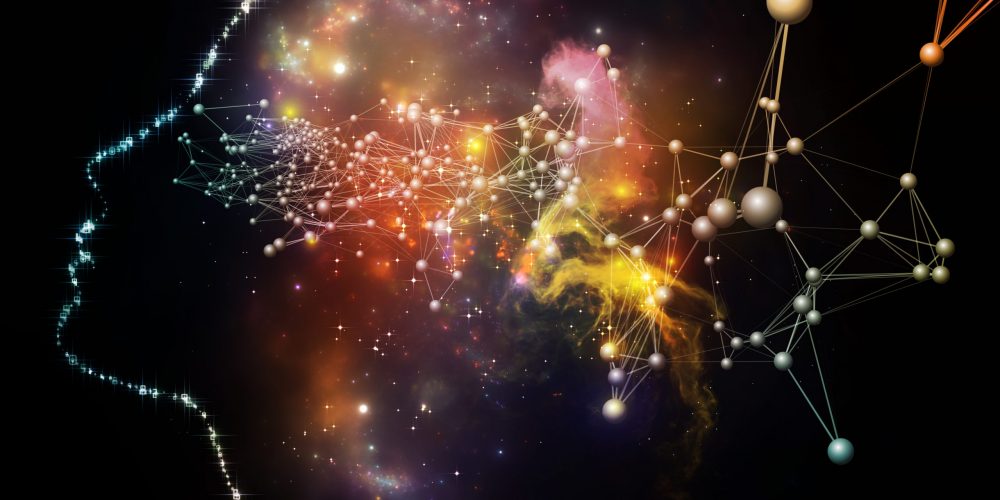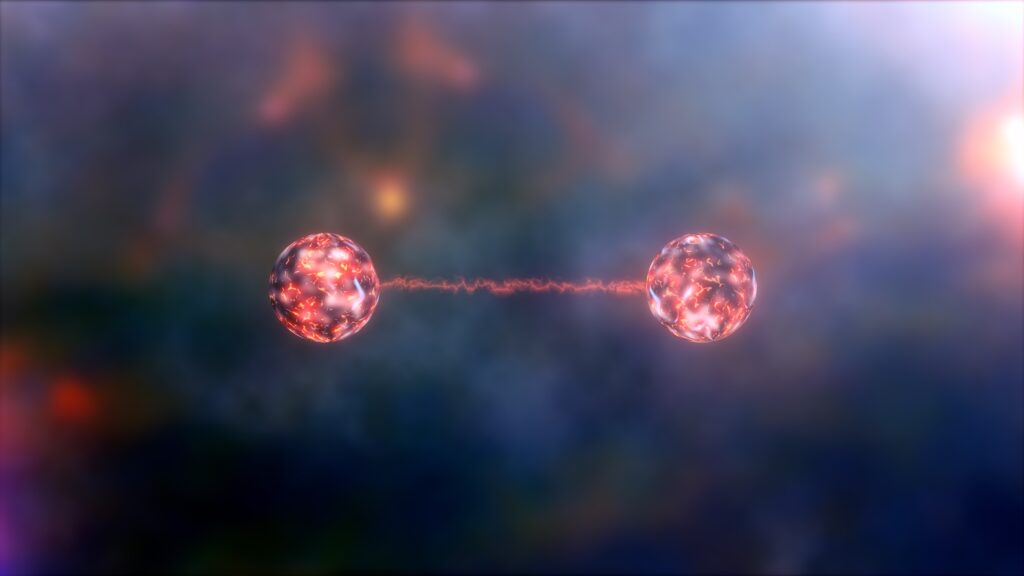Idealist stones hurt too
Reading | Philosophy
![]() Dino Alfier, PhD | 2022-02-06
Dino Alfier, PhD | 2022-02-06

Physical realism is a leap of faith compelled by fear induced by a failure of the imagination, argues Dino Alfier. He provides a comprehensive take-down of Samuel Johnson’s attempt to refute Bishop Berkeley’s idealism by famously kicking a stone and proclaiming, in a peculiar display of circular and illogical reasoning, “I refute it thus.”
Samuel Johnson, ‘striking his foot with mighty force against a large stone, till he rebounded from it,’ said, ‘I refute it thus,’ James Boswell tells us. What Johnson claims to be refuting with his kick is ‘Bishop Berkeley’s ingenious sophistry to prove the non-existence of matter, and that every thing in the universe is merely ideal.’ [1] Johnson’s ostensible refutation of idealism is certainly energetic, but is it also persuasive?
Imagine Berkeley standing beside Johnson and witnessing the scene. Johnson strikes the stone hard and says, ‘I refute it thus.’ Unperturbed, Berkeley strikes the very same stone just as hard and says, ‘I refute you thus.’ Berkeley’s ‘you’ stands by proxy for realism, that is, the idea that there exists a mind-independent reality.
It seems fair to suppose that Johnson believes that much of the force of his supposed refutation comes from the pain he experiences when striking the stone (note that Johnson’s foot rebounded from the stone, and, no matter how thick his boots might have been, it must have hurt some). As Berkeley is 24 years older than Johnson, it is highly probable that Berkeley’s kick hurts Berkeley’s foot more than Johnson’s kick hurts Johnson’s. Therefore, if the experience of how much it hurts to kick a stone could be adduced as evidence in support of a particular metaphysical view, then in this scenario Berkeley’s idealism would win the day.
However, if Berkeley had been standing by Johnson’s side at the moment of his purportedly fateful refutation, he would most likely have spared himself the pain, for Berkeley knew that the fact that it hurts to kick a stone cannot be adduced as evidence in support of any particular metaphysical view. Perhaps, Berkeley would have even seized the opportunity to make a little joke at Johnson’s expense: ‘I can see that you get a kick out of it,’ Berkeley might have said, ‘but, I’m afraid, that’s all you get.’
Berkeley is right, since Johnson’s attempt at refuting idealism is question-begging. Johnson is implying that it is obvious that kicking stones hurts because stones exist mind-independently,* but since mind-independent existence is precisely what idealism denies, explaining the throbbing foot by the mind-independent existence of stones does not refute idealism. Sure, kicking stones hard hurts: Berkeley would not dispute that. But that proves nothing regarding the mind-independent existence of stones or anything else.
Be that as it may, would Johnson have been interested in hearing Berkeley out? That is improbable. Johnson displays that condescending impatience so typical of those who, oblivious to their own metaphysical assumptions, have no time for metaphysics. ‘No sophistical trifling around for me,’ Johnson seems to be saying with his kick. ‘I’ve got real work to do. Real stones don’t strike themselves, you know.’
And Berkeley does know: there are no striker-independent struck stones.
Realism’s mind-independent reality is as inconceivable as a circle-independent circle’s center, and yet most people will consider the latter idea nonsensical, while the former idea is believed by most to be not only faintly plausible but utterly self-evident.
A realist may say, ‘It is obvious that the redness of this apple exists whether or not I see it.’ But the only obvious thing here is that the realist could never prove this statement, since the realist could never even talk about the redness of this apple without having seen it.
You can say to yourself that color would exist even if there were no instances of seeing it, but note that in making this statement you do not dispense with the concept of seeing, that is, with the concept of a mind-dependent process. Try expressing the same idea of the mind-independent existence of color without resorting to the concept of seeing. Can you? ‘Colour would exist even if…’ Then what?
When you think about it, then, you realize that, conceptually, reality as you experience it stands to mind as a circle’s center stands to a circle; you realize, that is, that you cannot conceive one without also conceiving the other.
Still, no matter how nonsensical realism may turn out to be upon reflection, realism’s pull remains strong—at least for me. It is almost comical that I should have to keep reminding myself not to make assertions that time and again I have proven to my intellectual satisfaction to be nonsensical. What am I afraid of? That if I turn my back for a second, the world as I know it will vanish forever? Or that one day it will transpire that my life has been—as in a fantastical story written by a primary-school pupil who cannot think of a better ending—all just a dream?
Realism is a leap of faith compelled by fear induced by a failure of the imagination. But the idiom ‘leap of faith’ can mislead: realism is in fact a holding on, seemingly for dear life. Realists believe they must hold on to a mind-independent reality as flat-earthers believe they would have to hold on to the edge at the end the world if they ever got there. Unsurprisingly, they never reach the end of the world. Realists, likewise, never reach the end of mind.
It seems to me that no amount of empirical evidence will ever weaken the pull that realism has for me. I hope that I will eventually be proven wrong on this score, that I will come across empirical evidence that convinces me once and for all that idealism is true, as I have been convinced by reflection. At any rate, it has not happened yet. And intellectual reflection does not stick for very long: you have to keep reapplying it, as it were.
… and it was just a dream. Yes, idealists may say that reality is a dream that our minds share [2], but idealists will not say that reality is just a dream: that is an addition realists tend to make. You can imagine Samuel Johnson saying, ‘Do dreams hurt when you strike them, eh?! Just a dream! Pouah!’ Perhaps, struck stones in dreams do hurt. But, alas, as I am not much of a dreamer, I would feel I stand on shaky ground, were I to pursue this line of thought.
Therefore, leaving aside whether or not dreamed struck stones hurt dreamed feet, the idealist can object to the realist’s addition of ‘just’ to ‘dream’ as follows: since reality as a whole is a dream that our minds share, there is nothing outside the dream in comparison to which the dream could be downgraded to being just a dream. The realist may say there is something outside the dream: namely, mind-independent reality. But, as we have seen, this is a nonsensical, albeit strongly attractive, idea.
It is as if realists believed that the use of words such as ‘dream’, ‘idea’ or ‘mind’ have the power to vaporize reality, to take away its solidity by some kind of dreadful ontological wizardry that must be exorcised. When Johnson strikes the stone and says, ‘I refute it thus,’ what he means is that the stone is solid, not thin air. But the violence of his gesture also smacks of ritualistic purging: ‘Get the idealist demon out of my head! Thud! Ouch! That’s better.’ There is no reason, however, for idealists to deny that reality feels solid. But solidity is not independent of experiencers.
You can sense Johnson’s frustration, as if he were kicking a car that has run out of petrol in the middle of a trip. The kicks will not help. The car refuses to restart, and at most what will be ‘achieved’ is a dent or two. By striking the stone, Johnson only manages to show that the stone refuses to dispense with his foot.
That must hurt, thinks Berkeley.
* Editor’s note: by inferring that the hurt implies a mind-independent reality, Johnson is presupposing the very thing he is attempting to argue for, which is the well-known logical fallacy of question-begging, also known as circular reasoning.
Bibliographical references
- Boswell, J. (1791). The Life of Samuel Johnson. Project Gutenberg: https://www.gutenberg.org/files/1564/1564-h/1564-h.htm (accessed 24th January 2022).
- Kastrup, B. (2011) Meaning in Absurdity. Winchester, UK & Washington, USA: iff Books, p. 29.

Essentia Foundation communicates, in an accessible but rigorous manner, the latest results in science and philosophy that point to the mental nature of reality. We are committed to strict, academic-level curation of the material we publish.
Recently published
Reading
Essays
Seeing
Videos
Let us build the future of our culture together
Essentia Foundation is a registered non-profit committed to making its content as accessible as possible. Therefore, we depend on contributions from people like you to continue to do our work. There are many ways to contribute.















